Pedals are a good way to enhance your sound, whether you want to add subtle enhancements with a reverb pedal, fill out your sound with an octave pedal, or even sound like you’re underwater, the right pedalboard set up lends itself to infinite possibilities.
Playing with pedals, live or in the studio, gives you a whole new, unique palate of tonal colors.
There are four main components of an effects pedal setup:
- Microphone
- Preamp
- Effects Loop
- Power Source
Microphone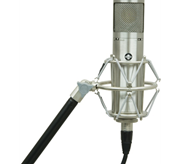
Once you have your instrument, you will need a good microphone to play into.
Preamp
That microphone will then plug into a preamp, which boosts the microphone signal of your instrument closer to the level of a guitar signal, which is needed for using the pedals.
Effects Loop
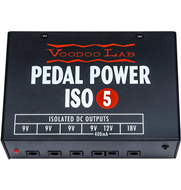 After the preamp, your sound will go through the “Effects Loop,” where refers to the chain of effects pedals through which you run your sound. Though you can, and should, experiment with the order of pedals, a good general rule is to place tone-based pedals towards the front, and time-based pedals towards the end of the effects loop. It’s better to be delaying a distortion sound than it is to be adding distortion to a delayed sound. After the signal runs through the effects loop, it can to go to an amp, speaker, or other monitoring device for playback.
After the preamp, your sound will go through the “Effects Loop,” where refers to the chain of effects pedals through which you run your sound. Though you can, and should, experiment with the order of pedals, a good general rule is to place tone-based pedals towards the front, and time-based pedals towards the end of the effects loop. It’s better to be delaying a distortion sound than it is to be adding distortion to a delayed sound. After the signal runs through the effects loop, it can to go to an amp, speaker, or other monitoring device for playback.
Finally, you’ll also need power for your pedals. Each pedal requires its own power supply. When you’re using multiple pedals, a singular power source with multiple outputs saves space, such as the Voodlab Pedal Power 4x4
Pedal Types
Here are some of the pedals you might want to include in your chain as you get stared:
Preamp
A preamp is crucial for any instrumentalist or vocalist that wants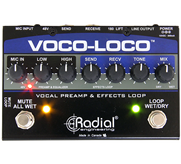 to incorporate effect pedals into their live or recorded performance. Radial Engineering’s Voco-Loco PreAmp and Effect Switcher has built-in phantom power for using with standard dynamic or condenser mics.
to incorporate effect pedals into their live or recorded performance. Radial Engineering’s Voco-Loco PreAmp and Effect Switcher has built-in phantom power for using with standard dynamic or condenser mics.
A two band EQ makes it easy to add warmth and shimmer, and individual send and receive controls optimize signal-to-noise ration and reduce distortion. Tone and blend controls let you smooth the sound of the pedals and allow you to mix the original “dry” signal with the “wet” effects signal. The Voco-Loco also has footswitches that allow you to activate your effects loop all at once, as well as mute your instrument mic entirely.
Shop All Switch Effects and PreampsOctave Pedals
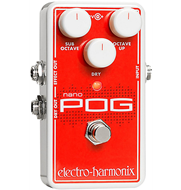 Octave pedals double your sound an octave up or an octave down, making it great for a big sound and organ-like effect. Most octave pedals have separate controls to mix the sub octave, the octave up, and your natural “dry” sound. By mixing down the dry signal and boosting either the sub octave or octave, you can sound like you’re playing an entirely different instrument, such as an alto saxophone sounding like a bari sax, or vice versa.
Octave pedals double your sound an octave up or an octave down, making it great for a big sound and organ-like effect. Most octave pedals have separate controls to mix the sub octave, the octave up, and your natural “dry” sound. By mixing down the dry signal and boosting either the sub octave or octave, you can sound like you’re playing an entirely different instrument, such as an alto saxophone sounding like a bari sax, or vice versa.
An octave pedal is a pitch shifting effect and should be placed towards the beginning of your effects loop.
Shop All Harmonizer & Octave Effects PedalsChorus Pedals
A chorus pedal gives your instrument a much thicker sound. It’s 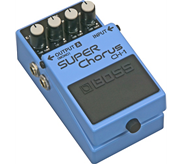 great for filling out melody or background lines when performing as a soloist or in a small group. Chorus pedals often have extra controls for effect level, EQ, rate, and depth, to give you complete control of your Chorus effect.
great for filling out melody or background lines when performing as a soloist or in a small group. Chorus pedals often have extra controls for effect level, EQ, rate, and depth, to give you complete control of your Chorus effect.
Chorus pedals clone your signal with identical notes to sound as if a full group is playing the same line., and are popular for just about any musical style, include rock, jazz, country, and funk.
Chorus is a modulation effect and should be placed towards the front of your effects loop.
Shop All Chorus Effects PedalsFlanger Pedals
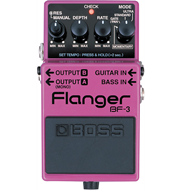 A flanger pedal copies a delayed version of your signal over your original live sound with a rising and falling pitch, creating a ‘sweeping’ effect, and has separate controls for depth, rate, and resonance. These controls allow you to tailor your flanger sound and can even make you sound like you're playing underwater!
A flanger pedal copies a delayed version of your signal over your original live sound with a rising and falling pitch, creating a ‘sweeping’ effect, and has separate controls for depth, rate, and resonance. These controls allow you to tailor your flanger sound and can even make you sound like you're playing underwater!
Flanger pedals are considered a modulation effect and should be placed towards the front of your effects loop.
Shop All Flanger Effects PedalsDelay Pedals 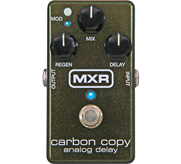
A delay pedal adds a delay, or echo, to your sound. Many delay pedals feature controls for the number of repeats in each cycle, the time between each repeat, and the mix your organic sound vs. the delayed sound.
Delay is a time-based effect, and shouldn’t alter the actual sound or tone of your instrument. This type of pedal is recommended to be at the end of your effects loop.
Noise Reduction Pedals
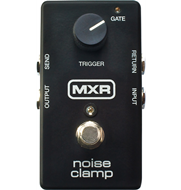 Noise reduction pedals allow you to use your pedals freely without any fear of hiss or excess noise. The MXR Noise Clamp also has a “trigger” knob to set the volume threshold at which the noise reduction kicks in. The Noise Clamp is capable of reducing noise up to 26dB, and has a bright green LED to indicate when it is active. For brass and woodwind players, a noise reduction pedal also helps eliminate some of the key noise from your instrument.
Noise reduction pedals allow you to use your pedals freely without any fear of hiss or excess noise. The MXR Noise Clamp also has a “trigger” knob to set the volume threshold at which the noise reduction kicks in. The Noise Clamp is capable of reducing noise up to 26dB, and has a bright green LED to indicate when it is active. For brass and woodwind players, a noise reduction pedal also helps eliminate some of the key noise from your instrument.
Reverb Pedals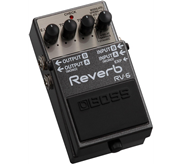
Reverb is probably the most commonly used audio effect, and is a great pedal to start with. A reverb pedal adds depth and resonance to imitate your sound in different spaces. Whether you want to add natural resonance you might hear in a small venue, or emulate playing in a giant arena, a reverb pedal can help you achieve this. Reverb pedals often have extra controls for type, length, and level of the reverb effect.
Reverb is a time-based effect, and won't alter the tone of your instrument. This type of pedal is best place towards the end of your effects loop.
Shop All Reverb Effects Pedals
Looper Pedal
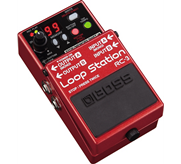 A looper pedal allows you to layer melodies by recording your sound and playing it right back. It’s a great choice for the horn player that wants to set up and perform multiple melodies at once, when playing alone or in a small group. The BOSS RC-3 has space for 99 different memory presets, a built-in drum machine, and even has a USB connection so that you can save looped tracks to your computer. It also has an auxiliary input so that you can play tracks through the pedal and record loops on top of your own external tracks. Looper pedals are great for building your own song, all by yourself.
A looper pedal allows you to layer melodies by recording your sound and playing it right back. It’s a great choice for the horn player that wants to set up and perform multiple melodies at once, when playing alone or in a small group. The BOSS RC-3 has space for 99 different memory presets, a built-in drum machine, and even has a USB connection so that you can save looped tracks to your computer. It also has an auxiliary input so that you can play tracks through the pedal and record loops on top of your own external tracks. Looper pedals are great for building your own song, all by yourself.




